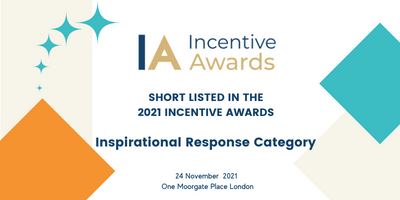Read time 7 mins
Author Alex Preece
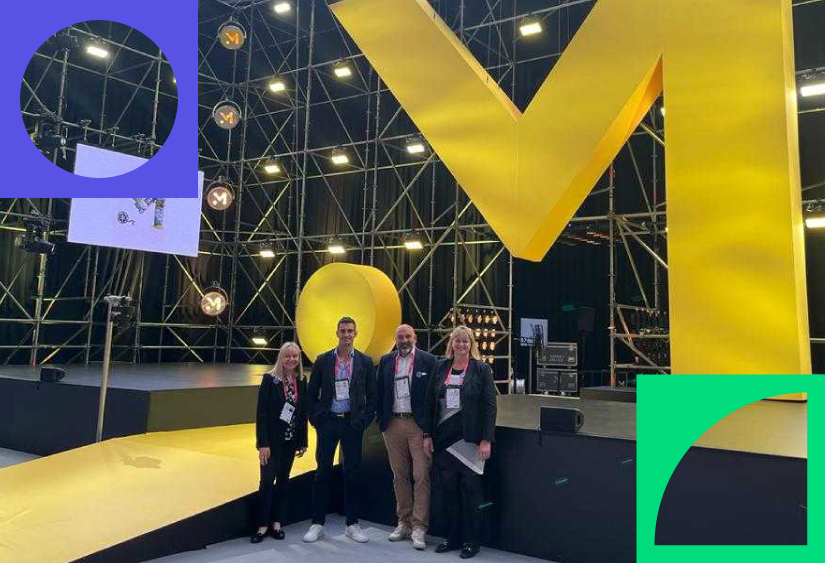

Money 20/20 is one of those events with an amazing energy - an action-packed three days fly by with lots of great conversations, amazing food and drink (crepes and the brisket come highly rated), and a Party in the Park that far exceeded expectations! The organisers of Money 20/20 really do put on a phenomenal show.
This year was extra special for us because for the first time Tillo had a stand in Hall 7 - with Batak, a logo game and a maze, no less. The competition on the Batak was certainly strong but I’m pleased to report that nobody managed to beat my high score (I’m not competitive at all!).
And of course, there were lots of great sessions, panels and discussions covering all things fintech - from crypto to open banking, BNPL and beyond!
Here are ten of our top takeaways in case you couldn’t attend the show this year, you were too busy networking to make all the sessions you wanted to, or simply want a recap!
.jpg?width=550&name=IMG-20220607-WA0010%20(1).jpg)
This was an overarching theme - I don’t think we attended a session that didn’t touch on customer experience at some point.
Everyone wants to get to the top of the league for customer satisfaction. Organisations need to listen to their customers, get closer to them and find new ways to make their lives easier.
As Philip Belamant at Zilch highlighted in his panel discussion, we are all customers. The fintechs that think about how they’re behaving as customers themselves and don’t accept the status quo will be able to truly put the customer first and build smarter products that are designed for their customers. This was a sentiment echoed by various other sessions and panellists:
“Think about the customer more than you think about the product.” - Javier Lipuzcoa, BBVA
Knowing your customer is an essential starting point for success. Anne Boden at Starling highlighted that you want customers that will lead to a profitable relationship. To achieve that it’s a case of quality rather than quantity if you want to promote sustainable growth.
Challenger banks are often at an advantage here - they can build a frictionless experience from the ground up that’s oriented around the customer experience. The ability to avoid the more complex spaghetti infrastructure traditional banks have enables fintechs to focus on delivering the product the market wants. And the advantages often lead to improved customer service and reduced overheads. As Louise Hill, COO and Co-Founder of Go Henry, emphasised they don’t need to build a massive Customer Services team as they have built infrastructure to make the customer experience as frictionless as possible.
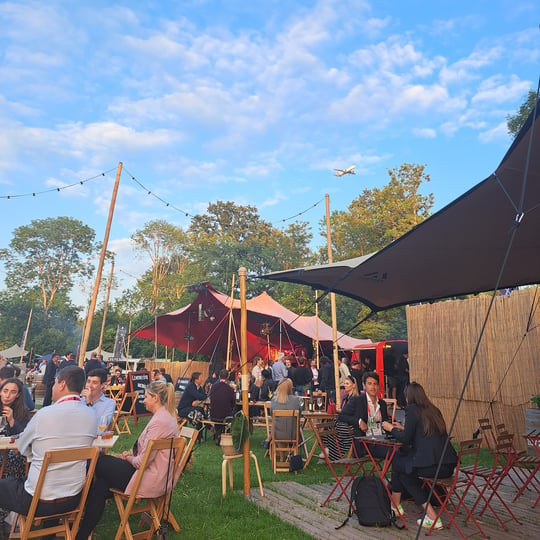
There’s a general consensus that payments don’t currently work optimally - there’s room for innovation and a better CX.
Payments innovators are looking to drive new services that delight customers and make the payments process seamless, scalable and secure. But what does that future actually look like?
Multiple sessions hinted at a payments future that is quite different from today’s experience; to use David Birch’s example, think of your car automatically paying the car park directly, without the need for apps - based on credentials, rather than identification (i.e. the car park wouldn’t know who you are but it can understand you as a certain type of customer). Much of this will rely on the development of the IoT (Internet of Things) as well as the right infrastructure layer.
Payments will become more automatic, whichever way consumers choose to pay. In “A World of POSsibilities: How The Point of Sales Can Become The Key to Customer Engagement and Innovation,” panellists discussed use cases where payments could become instant and seamless, enabling consumers to pay, gain loyalty points and redeem vouchers in a single step.
Some of this is several years away but for now we can say for sure that mobile payments and digital wallets are here to stay, reaching 80% adoption in the US. Wearables like McLear’s Ring Pay are also gaining traction - it doesn’t get much easier to pay than swiping your ring!

There’s no doubt that BNPL is a disruptor. One that’s here to stay.
BNPL is all about making it easy for customers to get interest free credit and is much cheaper than credit cards; there are currently trillions of dollars of debt on credit cards per year.
Experience and choice are two of the biggest digital transformation accelerants and they’re shaping the world of BNPL. Customers can now pay in ways they couldn’t before - in the not too distant past, they had fewer options and choices of financial products and credit scores were limiting.
Key to the acceleration of BNPL is the fact that the clunky elements of payments have gone. For example, the Klarna card can be used seamlessly in store, enabling consumers to pay in instalments.
Although new regulations might impact the customer experience slightly, the panellists of “What’s next for BNPL?” seemed to agree that BNPLs will be able to give their customers greater clarity and create a deeper understanding around their products.
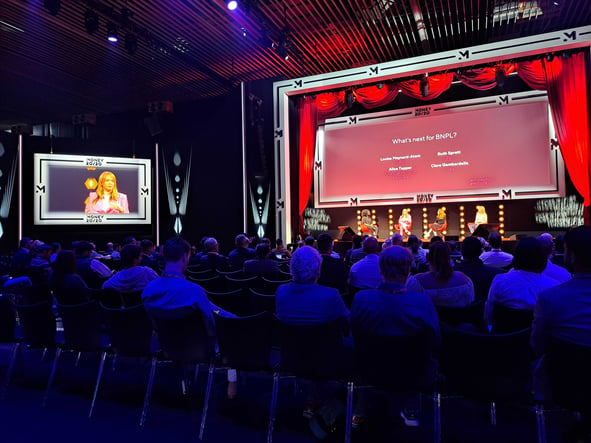
There’s currently $10 trillion caught up in the payments network. And, as crypto becomes more mainstream on a global scale, what’s next?
What’s clear is that regulation will become the norm and, although regular banks have FOMO, they’re actually in a good position to benefit in a regulated market. They already have the underlying infrastructure in place to enable this.
Some panellists predicted that cryptos who invested heavily in marketing for growth will struggle in the near future, with volatility expected in crypto for years to come, and some may burn out.
But then again, if the predictions are right, we’ll all be making crypto payments in the next five years. Crypto isn’t just a technology, it’s a movement. Stripe supports crypto payouts across 50 different countries and at least a third of all Americans currently own cryptocurrencies, with the number of people earning crypto having doubled in the last year.
Consumer data will enable fintechs to innovate and respond in the right way - for the consumer’s benefit.
As might be expected, affordability was a key theme at the conference with lots of talks touching on the cost of living crisis.
In the “How can we facilitate finance at the point of need?” panel discussion, Ripsy Bandourian at Plaid highlighted that it’s important to pass on the benefit to the consumer and make things more affordable. There are a multitude of ways they can be transacting. For example, rewarding customers for signing up and staying loyal to your product.
Several of Tillo’s fintech partners already pass some of their margin back to consumers in the form of loyalty points that can be cashed out onto digital gift cards and some are looking at ways to translate that into helping customers pay their mortgage or other household bills.
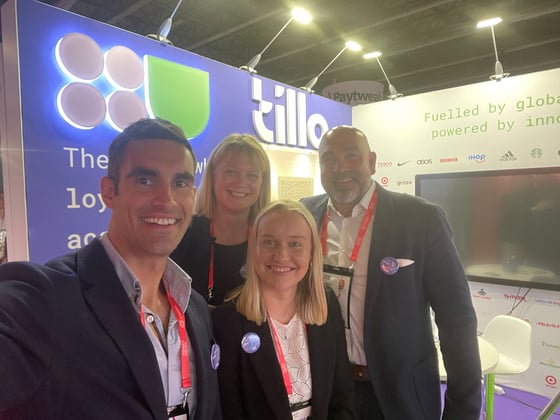
As many founders will know, prioritising key areas of focus will make your business sharper. Hone in on your specific value proposition and the challenge you solve for customers, focusing innovation on the areas that have the maximum potential impact.
In an uncertain environment, there’s a lot that can happen from an innovation perspective. Stepping back and putting the focus back on the customer need rather than the solution will make your organisation more sticky and help you get the product right. Making platforms more robust is also needed to ensure reliability and trust.
Louise Hill at Go Henry highlighted that focusing on a service offering that is something customers genuinely need will drive your revenue model and help “keep challenger banks safe” amidst the cost of living crisis.
There’s a lot of innovation, especially at the infrastructure layer, that’s enabling the move from open banking to open finance; this is all focused on providing the ultimate customer experience.
It’s all about putting the power in the hands of the consumer so they can decide where to share their data and receive services wherever they are. The use of information becomes much more permission based and an individual is the one giving the permission.
More payment mechanisms for consumers is an exciting prospect - open banking gives people more options, and enables them to have different experiences. As finance becomes more open, payments and identity will become one and the same.
Finance is becoming more and more decentralised, and embedded finance is transforming the way the industry is thinking about financial services.
One of the key conference themes was “champions are out, interoperability is in.” As new solutions spring up across verticals, walled gardens are starting to be broken down as fintechs embrace the concept of interoperability by design.
Organisations are integrating and merging in new and interesting ways, with the ecosystem growing and becoming more enmeshed. An orchestration layer allows organisations to have a wider range of partners, expand into new geographies and be more resilient.
“Financial services used to be thought of as a vertical - but it’s actually a horizontal across the board.” - Ripsy Bandourian, Plaid.
Partly as a consequence of this interconnection, lots of organisations are also looking to reposition themselves as tech companies rather than just banks, and behave in ways that are more synonymous with tech companies.
Anne Boden at Starling highlighted that they’re looking to become an international tech company that happens to own a bank. Starling’s SaaS cloud native banking software, Engine, is enabling other banks (outside the UK) to use their platform so the focus has become more on the tech rather than the bank. Ultimately, banks will become data economies.
Over the next few years, we can also expect technologies to intersect even more; for example, BNPL could be powered by blockchain technology.

Being sticky as an organisation is also to inspire trust from your customers - becoming a trusted partner requires the right content strategy and thinking more about what customers need, not what you want from them.
Transparency and trust is also something that the BNPL panel touched on as something that we can expect to change as more regulation is introduced to give consumers protection. Giving customers clarity on the products they’re singing up to will ultimately lead to a better customer experience.
It’s also important to remember that not everyone wants to embrace emerging technologies yet. The digital divide could become a huge reason for financial exclusion because not everybody is familiar with digital journeys. Cashless does have challenges so we need to look for new ways to bring everybody with us; nevertheless, different geographies will often spark new use cases, like the ability to pay with an 8-digit transaction pin in Nigeria which allows other members of the household to do the shopping.

As Louise Hill at Go Henry pointed out, the cost of acquisition and lifetime value are key metrics needed to drive sustainable growth - and this is true for all challenger banks and fintechs. So how can you drive your revenue model in the right direction?
Tillo is the modern-day loyalty platform that can help fast-growing fintechs solve the challenge of acquisition and loyalty. We help fast-growing fintechs turn customers into loyal fans, acquire new ones and drive long-term growth.
In fact, more than 90% of companies already have some sort of loyalty programme in place, making a loyalty and acquisition strategy more of a need-to-have than a nice-to-have to differentiate your organisation.
Visit our fintech page to find out more.



